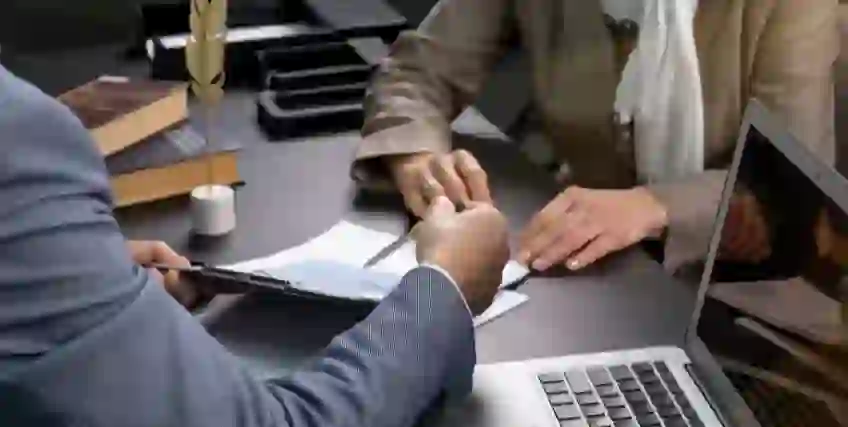Small Business Loans
A Practical Guide to Business Credit
With so many small business loans available, business owners have a lot to consider when it comes to funding their small businesses. Our simple guide will help you decide what small business loan meets your needs.
Business Term Loans
Usually best suited for companies that have been in business for several years and are profitable, a term loan is a lump sum of money given by a financial institution in exchange for repayment, plus interest, over a set period of time. Term loans are what come to mind for most of us when we think “loan.”
Term loans typically have few restrictions, allowing you to use the money for a wide range of business needs — from buying new equipment to funding a major marketing initiative.
Biz2Credit offers term loans of up to $1 million to businesses with at least $100,000 in revenue and owners with a FICO score of 650 or greater.
Commercial Real Estate Loans
Commercial real estate is defined as income-producing property used solely for business purposes. Whether you’re interested in a new location for your clothing boutique or want to expand into new office space, a commercial real estate loan helps your business acquire new real estate assets or capitalize on existing ones.
Unlike residential mortgages, commercial real estate loans are offered to business entities (not individuals). Many of these loans carry five- to 20-year loan periods with an amortization periization period that extends beyond the loan. For instance, a 10-year loan with a 30-year amortization period will have a monthly principal and interest payment for ten years, with the remaining loan amount due as a final balloon payment at the end of the 10-year period.
Biz2Credit offers a commercial real estate loan with a max term of 3 years, to businesses with at least $250K in annual revenue and owners with a FICO score of 650 or greater. This allows businesses to buy and pay off property quickly while paying less interest.
Revenue-Based Financing
Sometimes referred to as royalty-based financing, revenue-based financing is a way for businesses to raise capital by giving investors a percentage of ongoing gross revenues in exchange for an upfront investment. It’s not technically a loan, but more a type of financing. Unlike a small business loan, businesses don’t pay interest payments; instead, the business pays an investor a percentage of their business income until they reach a predetermined amount.
Investors don’t give money to just anybody. Revenue-based financing is only accessible for businesses with a very compelling pitch and potential to profit. Effectively, a financier is purchasing a portion of future receivables in exchange for cash upfront. Unlike an equity investment, revenue-based financing agreements typically have a maximum amount the business will pay the financier to satisfy the terms of the original cash infusion.
For instance, a financier may pay a small business owner $50,000 for a 10% distribution of profits every month up to $100,000. If that business turns $100,000 profits every month, $10,000 will be paid to the financier every month over the next ten months until the $100,000 maximum is hit.
SBA Loans
SBA loans are loans guaranteed by the United States Small Business Administration (SBA). These government-backed loans have more stringent qualification requirements and more competitive interest rates than traditional small business loans. The most common loan type, SBA 7(a) loans, require a minimum credit score of 615 and may be approved for as much as $5 million. As such, they may appeal to a wide range of borrowers, although the application process is rigorous and business owners will need to demonstrate a high likelihood that they’ll be able to pay back the loan.
The SBA offers a variety of loan types, including Express loans with expedited approval, Microloans for smaller amounts, and 504 loans for the purchase of commercial real estate.
Equipment Loans
Like the name suggests, equipment loans provide financing for specific business-related equipment. Equipment loans often look like a typical term loan, allowing a business entity to acquire equipment in exchange for a monthly payment that includes interest. However, they often have characteristics of a lease agreement and are usually collateralized by the equipment itself. When the loan is paid off, you own the equipment outright.
Unlike other small business loans, however, equipment loans may only be used on the specific piece of equipment for which they’re drawn. Rather than receive cash to buy the equipment yourself, a lender gains title in the equipment being purchased and technically retain ownership until you repay the loan amount.
A restaurant owner who needs a new commercial oven or a manufacturing company owner who needs a new heavy machine might choose an equipment loan to finance these major purchases.
Business Line of Credit
A business line of credit is a type of funding for small businesses that operates almost like a credit card. This flexible, short-term financing from a lender gives a small business a revolving line of credit to draw upon to make business-related purchases. The Federal Reserve’s 2023 Small Business Credit Survey found that business lines of credit are the most popular financing option for American business owners.
Funds from a business line of credit are usually accessible through a business checking account or mobile app, making them flexible to use on anything from office supplies to payroll. Like a credit card, when you spend on your line of credit, you’ll have to pay it back in a timely manner or get charged interest. As long as you pay the credit back every month, you’ll be able to access the full approved amount.
Do I Qualify for a Small Business Loan?
Different types of funding for small businesses have different qualification requirements. Before asking if you qualify for a small business loan, you should consider why you need funding and how much you will need. As you might expect, it’s more difficult to qualify for a multi-million dollar term loan than it is to qualify for a $10,000 line of credit.
Generally speaking, when applying for any kind of financing, you’ll need to show:
- Credit score: Business owners generally need at least a 500 credit score to qualify for a loan from an online lender, 600 for a business line of credit, 640 for an SBA loan, or 680 for a traditional term loan from a bank or credit union.
- Annual revenue: Your annual revenue report shows a bank how much you can likely afford to pay towards a loan each month, which will inform the amount you’re approved to borrow. Businesses that haven’t been operational for more than a year can show monthly revenue numbers. Financial documents like profit and loss statements, bank statements, and cash flow statements can help demonstrate your business’s financial strength.
- Years in business: Most banks require a business to be operational for at least two years before approving it for a term loan. The SBA reports that 33% of approved borrowers have been in business for fewer than two years, making these loans more accessible for new businesses.
- Business plan: Most important for SBA and bank loans, your business plan shows a lender or financier exactly how you plan to use their money to make your business profitable.
- Collateral or personal guarantee: Many banks require some kind of collateral, like equipment, real estate, or inventory, to secure a term loan or commercial real estate loan against the possibility that you fail to pay it back. SBA 7(a) loans require a personal guarantee from every owner of 20% or more of the business that they’ll pay a loan back from personal assets if the business fails to do so. Other financing types, like business lines of credit, don’t require collateral.
For most business owners, business lines of credit are the easiest to qualify for, while traditional term loans from banks or credit unions are the hardest to qualify for.
What Type of Funding for Small Businesses Should I Use?
Before applying for any type of funding, consider the amount you need and how quickly you can realistically pay it back. Ambitious business plans that require a real estate footprint and inventory — like a restaurant or retail store — may need several hundred thousand dollars from a traditional term loan. Lean businesses that just need to pay a couple of employees or fund a startup marketing campaign — like a creative agency or coaching business — could succeed with a small business line of credit.
Remember, the more you borrow or accept in investment, the more you’ll have to pay back — usually in the form of a hefty monthly payment.
Compare Your Small Business Loan Options
The right small business loan for one business will be different from another. Review the table below for a breakdown of what type of funding for small business may make most sense for you.
| Loan/Funding Type | Best For | Typical Funding Speed | Average Interest Rate (*APR)1 | Typical Term Length |
|---|---|---|---|---|
| Term Loans | Established businesses looking to grow or small businesses with very large ambitions | 1 week to 2 months | 6.14% - 12.47% | 1 - 5 years |
| Commercial Real Estate Loans | Businesses looking to acquire real estate | 3 months | 5% - 8% | 5 - 20 years |
| Revenue-Based Financing | Business owners who don’t want to pay interest and don’t mind sharing profits | Immediate | Percentage of profits paid to investor | VN/A |
| SBA Loans | Small businesses looking to grow | 30 days or less for Express loans | 8-13% | 5 - 25 years |
| Equipment Loans | Companies that need heavy duty or high-end equipment | As little as 48 hours | 8-30% | Estimated life of equipment |
| Business Line of Credit | Lean businesses that only need small amounts of capital it can pay back quickly | As little as 48 hours | 3 – 55.9% | 6 months - 5 years |
How Can Financing Help My Business?
They say you have to spend money to make money. While that’s not always true, financing can be very helpful to businesses in a variety of ways.
- Grow and expand: For many businesses, the best way to earn more money is to simply produce more and reach more potential customers. Financing new storefronts, marketing campaigns, and more can expand your business’s revenue-earning opportunities.
- Hire new staff: More employees mean more is getting done, whether you’re launching a new revenue source or scaling up productive hours. Small business loans can give you the money you need to support payroll increases in the short term that may yield bigger profits.
- Buy new equipment: Whether you have old equipment requiring expensive maintenance or it’s time to upgrade to machines that work more efficiently, financing can help you ensure you have the best equipment to support cost-effective operations.
- Cover invoices: In a pinch, a business line of credit or other fast forms of financing can help your business remain in good standing with vendors and suppliers.
- Restock inventory: When a product is hot and flying off the shelves, it’s in your business’s best interest to restock quickly. A quick influx of cash can help you do that to ensure you capitalize on surging demand.
Business Loan Articles
Acquisition Funding vs. Traditional Business Loans - Key Differences Explained
If you're thinking about expansion, you’ve probably heard of acquisition funding and traditional business loans.
The Smart Way to Fund Your Business Without Losing Control
At some point, every small business faces a decision point - grow or stay the same. For most, growth means finding the right funding source.
Instant Business Loans for First-Time Borrowers: What You Need to Know
Securing financing is a pivotal step for small business owners aiming to launch or expand their ventures.
Can Fast Business Loans Close the Funding Gap for Women Entrepreneurs?
Women-owned businesses now represent 42.1% of all U.S. businesses, yet female entrepreneurs still face barriers when it comes to funding.
The Art of Negotiating a Business Loan to Purchase an Existing Business: A Masterclass
There are two ways to become a small business owner. The first is to start a new business from scratch.
From Paper to Digital: Modern Payroll Options for Small Business
The basic idea behind payroll isn’t new: Business owners have been paying employees for their labor for eons.
Are Quick Loans Right for Freelancers and Gig Workers
Freelancers and gig workers have broken free from the traditional 9-to-5 grind. No fluorescent office lights, No endless commutes, and no punch-ins and punch-outs.
The Truth About No-Credit-Check Business Loans: Pros, Cons, and Hidden Costs
Business loans without credit check have become popular among small business owners looking for fast, easy funding.
Comparing SBA and Online Startup Loans for Small Businesses
When small business owners begin exploring their financing options, one critical question surfaces: should they apply for















